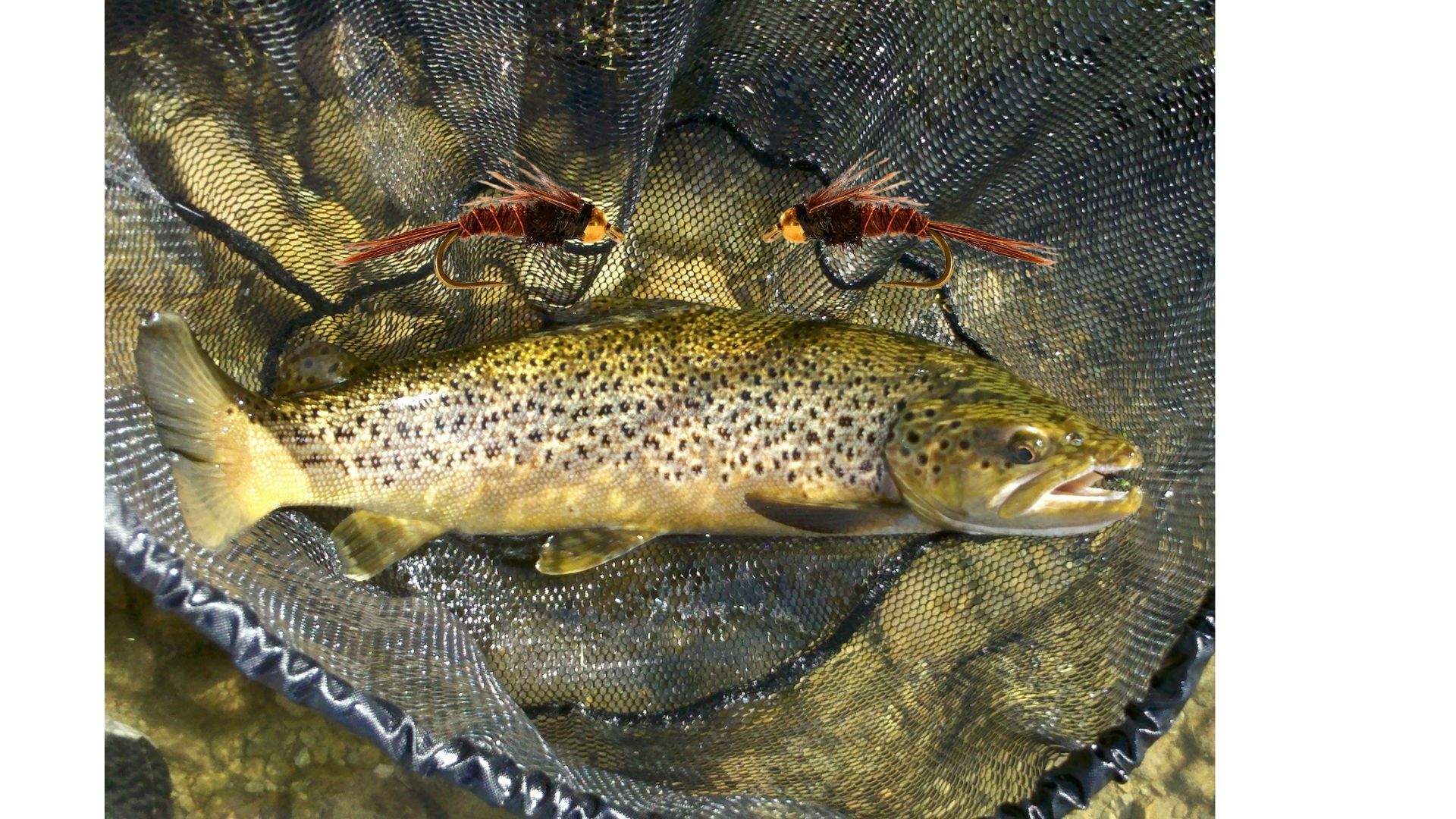Pheasant tails are some of the most fished nymphs for trout. Initially designed to imitate mayfly nymphs of the baetis family it quickly become apparent that trout mistook them for a wide range of mayfly, caddis, and other aquatic species.
Choosing which pheasant tail nymph (PTN) to fish can be difficult, simply because there are dozens if not hundreds of variations of pheasant tail nymphs.
So, which pheasant tail variation should you fish, and does it really matter?
Is a classic tie fly like the Sawyer or American pheasant tail superior to a modern interpretation like the Polish Pheasant tail or Frenchie?
In this guide, I’ll go over some of the more popular patterns, as well as their relative strengths and weaknesses.
I’ll also include links to videos that demonstrate how to tie them.
Sawyers Pheasant Tail Nymph
The original and one of the most fished nymphs PTN variations is the Sawyer pheasant tail. It was made in the early 1900’s by famed river keeper Frank Sawyer who use to fish on the River Avon.
At the time the PTN was revolutionary, tied with copper rather than thread allowed the nymph to sink to target trout feeding beneath the surface. Even today, the Sawyer pheasnt tail remains an excellent nymph that broadly represents a wide selection of aquatic insect life. If it did not catch fish, it would not have gained such popularity.
Another great feature of the PTN is that it is a very simple fly to tie and requires only two materials, fine copper wire, and pheasant tail.
There are many variations of the Sawyer Pheasant Tail. They can be tied with or without a bead-head, or a piece of tinsel can be tied into the abdomen to create the flashback variant. I have even seen some people give them rubber legs.
Tying instructions can be found in the video below
My thoughts on the Sawyer Pheasant Tail
I own a lifetime supply of Sawyer pheasant tail nymphs because I usually grab a few whenever I see them discounted. but I rarely fish this pattern and I will explain why.
While the Sawyer Pheasant tail is an excellent nymph. I sometimes feel it is a victim of its own success, I am convinced trout in heavily pressured waters have learned to recognize the pattern and are now more likely to avoid it. Doubly so if it is the gold bead variant.
For this reason, I usually only fish the traditional pheasant tail patterns early in the season or in rarely fished waters.
American Pheasant Tail
The American Pheasant tail is a classic variant of the Sawyer Pheasant tail. Its creation is credited to the late Al Troth. These two flies have more in common than separates them.
The American Pheasant tail is a bit flashier, typically including a peacock thorax and legs. In America, this variation is likely more popular than even the original but both versions fish extremely similarly.
Tying instructions are in the video below.
Polish Pheasant Tail Nymph
This polish variant of the Pheasant Tail is all about getting deep fast, and trigger strikes via hot spots.
The design is dominated by a heavy tungsten bead, so it gets down quickly and the two hot spots created by the binding. It has become a very popular variant so the multiple hot spots must work.
Best of all, the Polish Pheasant tail nymph is still relatively simple to tie.
Frenchie Nymph
The Frenchie is a very streamlined and neatly tied, completely legless variation of the pheasant tail. It features a single hot spot just behind the bead.
It sinks quickly, making it a good pattern for targeting fish in fast flowing or deeper water.
I personally like this pattern simply due to how sparsely it is tied. I like skinny, thin nymphs. In my opinion, many pheasant tail nymphs have too much going on which is one of the main reasons I rarely fish the original.
Cadillac Pheasant Tail
The Cadillac pheasant tail has its origins in New Zealand but is gaining an international following. The most notable feature of the Cadillac is its big bulbous Thorax, moose hair wing case and long legs. Where the Frenchie represents streamlined minimalist, the Cadillac represents a big meal.
Moose hair is preferred over elk hair for extra durability.
The Cadillac is also very similar to the Quasimodo pheasant tail and I am certain both flies will work interchangeably.
When I find the trout are not interested in my skinny nymphs, I sometimes will try a Cadillac instead to see if it is to their liking. The heavily weighted Cadilac is designed to be fished deep.
Teeny Nymph
The teeny nymph was invented by Jim Teeny back in 1962. He later went on to create some rather excellent fly lines.
The Teeny Nymph is a streamlined differentiation from the typical pheasant tail nymph. It is traditionally tied without a bead, relying nearly entirely on the copper wire for weight.
Depending on the variation, the pheasant tail feathers are used to form either one or two sets of downwards facing legs.
While trout will certainly take it for a mayfly or caddis nymph, I feel it does a better job at representing tiny shrimps or krill. It even sees some use for saltwater species.
Summary
Above are only a few of the many Pheasant tail nymph variations, I like to have several in my nymphing box at all times in a wide range of sizes. There are countless more variations possible, only the fly-tyers imagination and materials limit the variations and options.

